10 Compelling Reasons To Upgrade Your Shopify Theme

The decision of when it’s time to upgrade your Shopify theme is often a challenging decision for most store owners.
While there isn’t a universally agreed-upon “top 10,” here are some compelling reasons to consider upgrading your Shopify theme:
1 – Enhanced Design and User Experience (UX)
Modern Shopify 2.0 themes offer sleek, mobile-responsive designs that create a positive first impression and provide a smooth browsing experience for customers on any device.
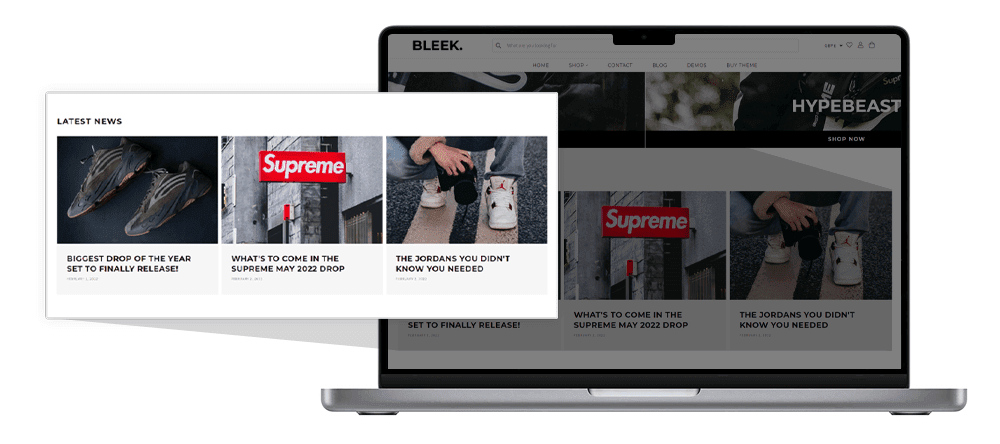
Upgrading your Shopify theme can significantly improve the design and user experience (UX) of your online store, leading to happier customers and potentially increased sales.
Here’s a deeper dive into why:
Modern and mobile-responsive design:
- Visually appealing: Upgraded themes often sport sleek and modern designs that grab attention and create a positive first impression. This can be achieved through high-quality visuals, clean layouts, and a focus on white space.
- Mobile-first approach: With the majority of online shopping now happening on mobile devices, a responsive design is crucial. Upgraded themes ensure your store seamlessly adapts to different screen sizes, providing a smooth browsing experience for customers on phones, tablets, and desktops.
- Accessibility: Many modern themes prioritize accessibility, ensuring your store is usable by everyone, regardless of their abilities. This includes features like clear typography, high color contrast, and keyboard navigation.
Improved user experience:
- Intuitive navigation: Upgraded themes often feature clear and intuitive navigation menus, making it easy for customers to find what they’re looking for quickly and efficiently. This can include user-friendly search bars, well-organized product categories, and clear calls to action.
- Enhanced product pages: Upgraded themes may offer features like high-quality product images and videos, detailed product descriptions, and customer reviews. This allows customers to make informed purchasing decisions and builds trust in your brand.
- Streamlined checkout process: A smooth and efficient checkout process is crucial for conversion rates. Upgraded themes may offer features like guest checkout options, multiple payment methods, and progress indicators, making the checkout process faster and more user-friendly.
- Overall brand experience: Upgraded themes to OS 2.0 allow for greater customization, enabling you to tailor the look and feel of your store to match your brand identity. This creates a cohesive and consistent experience for customers, from the moment they land on your homepage to the checkout process.
Overall benefits:
- Increased customer satisfaction: A positive user experience leads to happier customers, who are more likely to return and recommend your store to others.
- Improved conversion rates: A well-designed and user-friendly theme can significantly increase your conversion rates, leading to more sales and revenue.
- Enhanced brand image: A modern and professional-looking storefront can improve your brand image and build trust with potential customers.
Remember: Upgrading your theme is just part of the equation. Consider conducting user research to identify specific pain points in your current store design and prioritize features that address those issues. By focusing on a user-centered approach, you can ensure your upgraded theme truly enhances the customer experience and drives positive outcomes for your business.
2 – Improved Performance and Speed
Up-to-date themes are often built with efficient code, leading to faster loading times, which can significantly impact conversion rates and customer satisfaction.
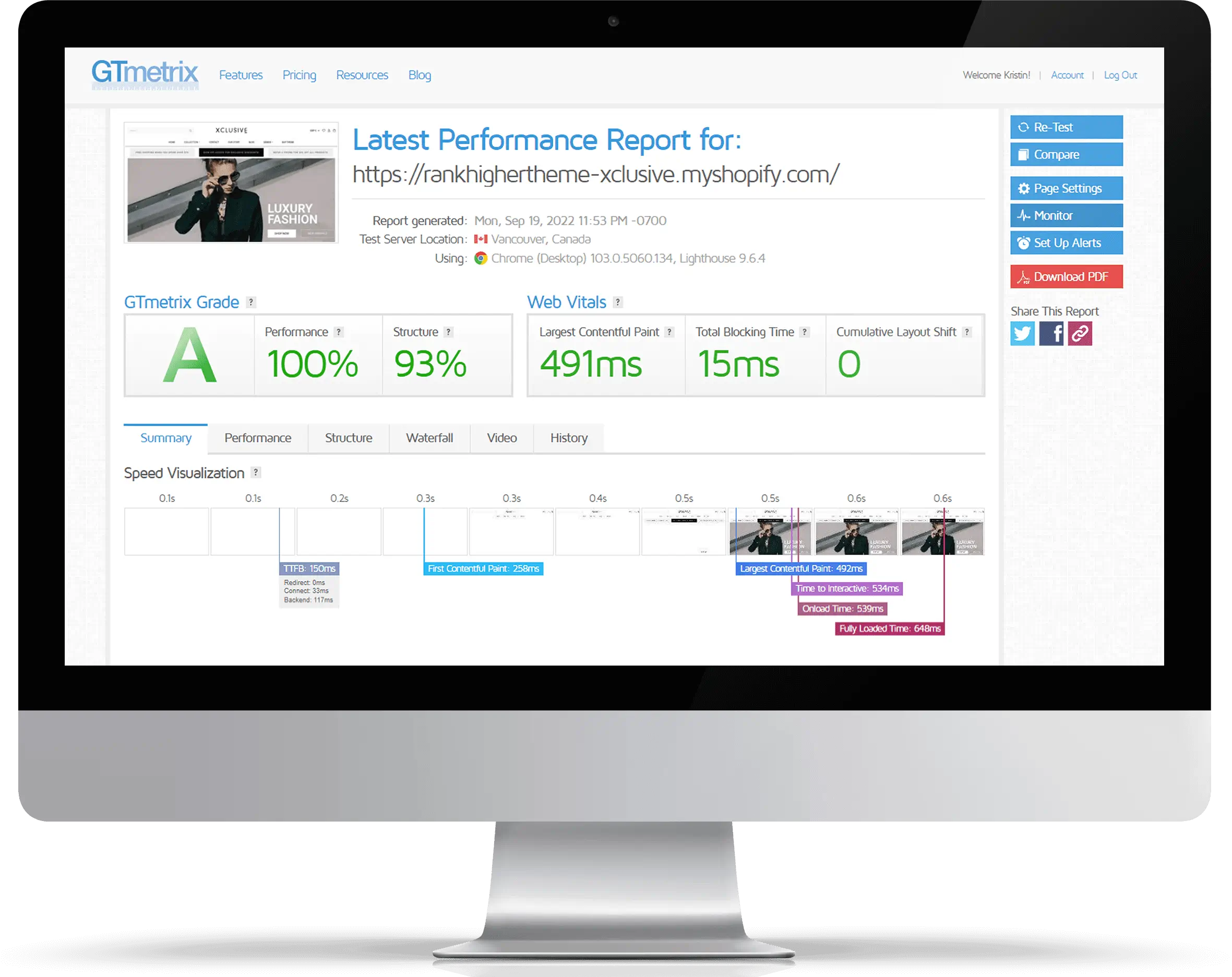
Upgrading to a Shopify 2.0 theme can significantly boost your online store’s performance and speed, leading to several potential benefits:
Faster loading times:
- Theme code optimization: Shopify 2.0 themes are often built with efficient code, using modern practices and frameworks that minimize file size and streamline data transfer. This can significantly reduce page load times, especially compared to older themes.
- Improved resource management: Shopify 2.0 introduces features like dynamic sections and asset optimization, which allow for better management of resources like images and scripts. This helps prevent unnecessary loading of elements until they are needed, further improving page load speed.
Enhanced user experience:
- Reduced bounce rates: Faster loading times are crucial for a positive user experience. Impatient customers are more likely to abandon a slow-loading website, leading to higher bounce rates. By improving speed, you can keep users engaged and increase the chances of them browsing your products and making a purchase.
- Improved SEO ranking: Search engines like Google prioritize websites with fast loading times in their search results. A faster website can potentially improve your store’s ranking, making it easier for potential customers to find you online.
Additional benefits:
- Increased conversion rates: Studies have shown that faster loading times can lead to higher conversion rates, as users are more likely to complete purchases on a smooth and responsive website.
- Improved mobile experience: Faster loading times are especially important for mobile users, who are more likely to abandon slow-loading websites. A faster store ensures a positive experience for mobile shoppers, which is crucial in today’s mobile-first world.
It’s important to note that:
- Theme quality matters: While Shopify 2.0 offers potential speed improvements, the overall quality and coding practices of the specific theme you choose will still play a significant role. Opt for well-reviewed and reputable themes known for their performance optimization.
- Consider your existing setup: Upgrading to a Shopify 2.0 theme might require adjustments to your existing store setup, particularly if you’re using custom code or apps. Ensure compatibility and be prepared to make necessary modifications to avoid potential issues.
By upgrading to a Shopify 2.0 theme and prioritizing a focus on performance optimization, you can create a faster and more efficient online store, leading to a better user experience, improved SEO ranking, and potentially increased sales and revenue.
3 – Greater Customization Options
One of the most significant advantages of upgrading your Shopify theme is the enhanced control and flexibility you gain over the look and feel of your online store.

Here’s a breakdown of how upgraded themes offer greater customization options:
Built-in customization tools:
- Theme editor: Many newer themes come equipped with user-friendly theme editors. These visual interfaces allow you to customize various aspects of your store’s appearance without requiring extensive coding knowledge.
- Drag-and-drop functionality: This feature allows you to easily rearrange sections, elements, and content blocks on your pages, enabling you to create a unique and personalized layout for your store.
- Color pickers and font options: Upgraded themes often provide a wider range of color palettes and font choices, allowing you to match your brand identity and create a visually appealing and cohesive store experience.
Theme settings:
- Global settings: These settings allow you to adjust aspects like your store’s logo, favicon, social media links, and overall color scheme across all pages.
- Section-specific settings: Many themes offer individual customization options for different sections on your pages, such as product lists, banners, and footers. You can adjust layouts, colors, fonts, and content within each section.
Advanced customization (for developers):
- Liquid templating language: Shopify themes utilize the Liquid templating language, which allows developers to further customize various aspects of the theme beyond the built-in tools. This includes modifying layouts, adding custom functionality, and integrating with third-party apps.
- Theme app extensions: Some themes offer additional customization options through theme app extensions, which are purchased separately and provide specific functionalities like advanced product filtering, custom page layouts, and unique design elements.
Benefits of greater customization:
- Brand consistency: You can create a store that accurately reflects your brand identity and resonates with your target audience.
- Improved user experience: By tailoring the layout and content to your specific needs, you can create a user experience that is intuitive and easy for customers to navigate.
- Increased differentiation: Greater customization allows you to stand out from the competition and create a unique online presence for your store.
- A/B testing: The ability to easily modify different elements of your store enables you to conduct A/B testing and identify what resonates best with your audience, ultimately leading to better conversion rates and sales.
Remember:
- Choose a theme that matches your skillset: If you’re not comfortable with coding, opt for a theme with user-friendly built-in customization tools. For advanced customization options, consider themes that offer extensive Liquid support or additional app extensions.
- Start small and iterate: Don’t try to overhaul your entire store at once. Start with small customizations and gradually refine your design based on customer feedback and data analysis.
By taking advantage of the greater customization options offered by upgraded Shopify themes, you can create a truly unique and personalized online store that reflects your brand and resonates with your target audience.
4 – Unlocking Shopify 2.0 Features
Upgrading to a Shopify 2.0 theme unlocks access to a range of powerful new features that can significantly enhance the functionality and flexibility of your online store.
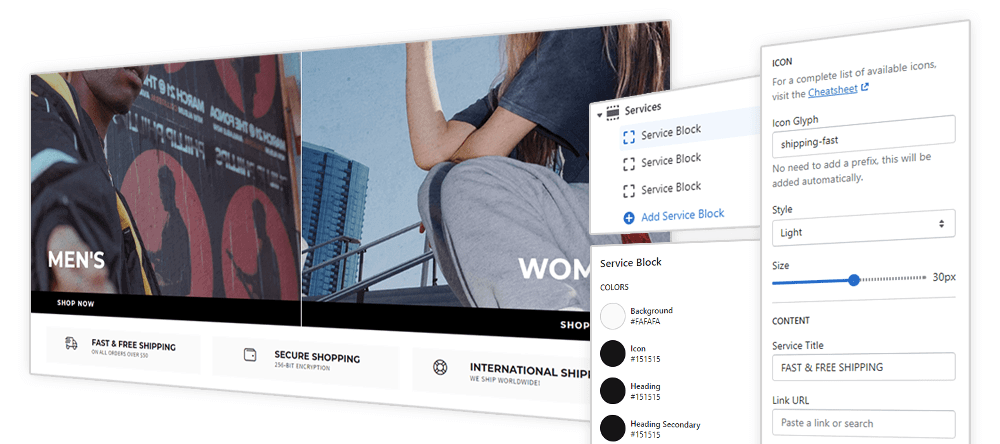
Here are some key features you’ll gain access to:
Sections Everywhere:
- This feature allows you to add, remove, and rearrange sections (individual elements like text blocks, banners, or images) across various pages in your store. Previously, sections were mainly limited to the homepage.
- With Sections Everywhere, you can create unique layouts for product pages, collection pages, blog posts, and even custom pages, offering greater flexibility and control over the overall user experience.
Metafields:
- Metafields are custom data fields that allow you to store additional information about your products, variants, collections, customers, and orders beyond the typical data points offered by Shopify.
Upgraded themes leverage the enhanced metafields functionality in Shopify 2.0. This enables you to:
- Add rich product details like size charts, ingredient lists, or care instructions.
- Create custom collection filters based on specific metafield data.
- Personalize product recommendations or display dynamic content based on customer metafields.
Theme App Extensions:
Theme app extensions are optional add-ons that extend the functionalities of a theme. They are developed by third-party developers and can be purchased and installed on compatible Shopify 2.0 themes.
These extensions offer a wide range of functionalities, such as:
- Advanced product filtering and sorting options.
- Custom page layouts for specific needs.
- Integration with popular marketing and analytics tools.
- Unique design elements and interactive features.
Improved Theme Editor:
Shopify 2.0 introduces an enhanced theme editor that offers a more intuitive and user-friendly experience. This includes features like:
- A visual drag-and-drop interface for easier section management.
- Real-time preview of your changes, allowing you to see how your store will look before publishing.
- Improved code editing tools for developers.
Other Features:
Upgrading to a Shopify 2.0 theme might also unlock access to additional features like:
- Version control for easier theme management and rollback options.
- File transformation tools for optimizing images and other media files.
- Improved accessibility features to ensure your store is usable by everyone.
Benefits of Unlocking Shopify 2.0 Features
- Increased store functionality: You can add features and functionalities that were previously unavailable or required custom development.
- Improved user experience: Create a more engaging and personalized shopping experience for your customers.
- Enhanced SEO: Utilize metafields and other features to improve your store’s search engine ranking.
- Greater efficiency: Streamline your workflow and save time by leveraging built-in features and functionalities.
Remember:
- Not all upgraded themes offer identical features. Ensure the theme you choose explicitly mentions support for Shopify 2.0 and the specific features you’re interested in.
- Some features, like theme app extensions, might require additional costs.
- Upgrading to a Shopify 2.0 theme might require adjustments to your existing setup, especially if using custom code or apps.
By unlocking the powerful features of Shopify 2.0 with an upgraded theme, you can create a more functional, user-friendly, and future-proof online store that sets you apart from the competition.
5 – Enhanced Security
Upgrading your Shopify theme can significantly improve the security of your online store, protecting your customer data, financial information, and overall business operations from potential threats.

Here’s a breakdown of how upgraded themes contribute to enhanced security:
Built with Modern Security Practices:
Upgraded themes are often developed with the latest security best practices in mind, addressing known vulnerabilities and incorporating security measures to mitigate potential risks. This includes:
- Secure coding practices: Developers who create upgraded themes are likely to be aware of and adhere to secure coding standards, minimizing the possibility of introducing vulnerabilities through coding errors.
- Regular security updates: Reputable theme developers typically prioritize releasing regular security updates to address any newly discovered vulnerabilities or security threats.
- Compliance with security standards: Upgraded themes may be designed to comply with industry-standard security protocols like PCI-DSS (Payment Card Industry Data Security Standard) for handling sensitive payment information.
Reduced Attack Surface:
- Upgraded themes may be built with cleaner and more efficient code compared to older themes. This can reduce the attack surface of your store, making it less susceptible to potential exploits or malicious attacks. This is because fewer entry points exist for unauthorized access attempts.
Compatibility with Security Apps:
Many upgraded themes are designed to be compatible with popular security apps available on the Shopify app store. These apps offer additional security features like:
- Fraud prevention tools to identify and prevent fraudulent orders.
- Password management solutions to enforce strong password policies for both customers and administrators.
- Web Application Firewalls (WAFs) to filter and block malicious traffic attempting to access your store.
Secure Code Injection (XSS) Protection:
- Upgraded themes are more likely to be developed with safeguards against malicious code injection (XSS) attacks. These attacks attempt to inject malicious scripts into your website, potentially compromising customer data or website functionality. By utilizing secure coding practices and input validation techniques, upgraded themes can help prevent such attacks.
Automatic Updates:
- Many upgraded themes, particularly those hosted on the Shopify Theme Store, offer automatic updates. This ensures your theme remains current with the latest security patches and bug fixes, minimizing the risk of vulnerabilities being exploited.
It’s important to note that:
- Theme quality matters: While upgraded themes generally offer improved security, choosing a theme from a reputable developer with a proven track record of security updates and best practices is crucial.
- Security is an ongoing process: Upgrading your theme is just one step towards a secure online store. It’s essential to maintain strong security practices like using complex passwords, regularly backing up your store data, and staying informed about emerging security threats.
By prioritizing security and choosing an upgraded theme that incorporates modern security practices, you can significantly reduce the risk of attacks and safeguard your store, your customers, and your business.
6 – Advanced SEO Capabilities
Shopify OS 2.0 theme can offer several advantages in terms of Search Engine Optimization (SEO), potentially boosting your store’s visibility and organic traffic in search engine results pages (SERPs).
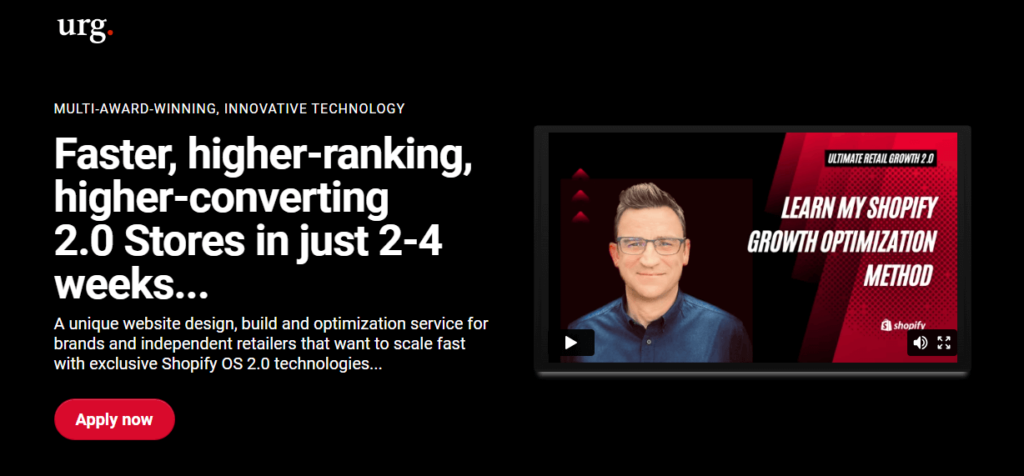
Here’s how upgraded themes can contribute to a stronger SEO strategy:
Improved On-Page SEO:
Optimized product pages: Many upgraded themes offer features specifically designed to enhance on-page SEO for product pages. This might include:
- Editability of page titles and meta descriptions: Upgraded themes allow you to easily customize page titles and meta descriptions with relevant keywords and concise product information, which search engines consider when ranking pages.
- Structured data markup: Some themes integrate structured data markup functionality, which provides search engines with richer information about your products, potentially leading to richer snippets in search results.
- Image alt text optimization: Upgraded themes may offer tools to easily add descriptive alt text to product images, improving image search ranking and accessibility.
Mobile-Responsive Design:
- Upgraded themes are typically built to be mobile-friendly and responsive, meaning they adapt seamlessly to different screen sizes. This is crucial, as Google prioritizes mobile-friendly websites in search rankings.
Faster Loading Speeds:
- As discussed previously, upgraded themes often emphasize efficient coding practices, leading to faster loading times. Faster loading speeds are a known ranking factor in search engine algorithms.
Blog Integration:
- Some upgraded themes offer seamless blog integration, allowing you to create informative and engaging content relevant to your products and target audience. Regularly publishing high-quality blog content can improve your website’s authority and relevance in search engine eyes, potentially leading to higher rankings for relevant keywords.
Schema.org Integration:
- Advanced themes might integrate with schema.org markup tools, allowing you to provide search engines with additional context about your store and products. This can improve the richness and clarity of your search results snippets, potentially leading to a higher click-through rate (CTR).
Theme App Extensions:
- Several theme app extensions available on the Shopify app store cater specifically to SEO needs. These extensions can offer features like:
- Automatic keyword research and optimization suggestions.
- Internal linking suggestions to improve website structure.
- Broken link checker to identify and fix potential issues.
It’s important to remember that:
- SEO is an ongoing process: Upgrading your theme is just one piece of the SEO puzzle. You will need to implement additional strategies like keyword research, content creation, and link building for long-term SEO success.
- Choose a theme with SEO in mind: Not all upgraded themes offer the same level of SEO capabilities. Look for themes that explicitly mention SEO features and functionalities.
- Content remains king: Even with advanced SEO features, high-quality and informative content relevant to your target audience remains crucial for attracting organic traffic and building a strong brand presence.
By leveraging the advanced SEO capabilities offered by upgraded Shopify themes and combining them with a comprehensive SEO strategy, you can increase your online store’s visibility in search results, attract more organic traffic, and ultimately drive sales and conversions.
7 – Better App Integration
Newer themes may offer improved compatibility and integration with various Shopify apps, streamlining your workflow and adding valuable functionalities to your store.
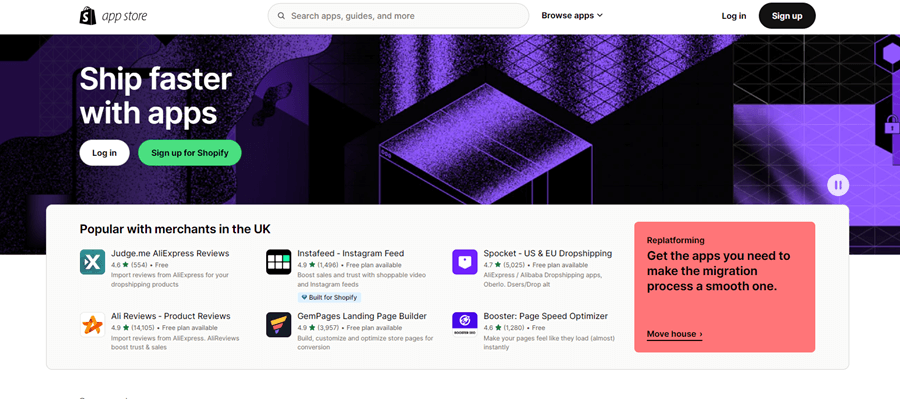
Here’s how:
Theme App Extensions:
Introduced with Shopify 2.0, theme app extensions are a game-changer for app integration. These extensions are specifically designed to work seamlessly with compatible Shopify 2.0 themes, offering several advantages:
- No code editing: Unlike traditional app integrations, theme app extensions don’t require modifying your theme code. This eliminates the risk of breaking your theme or introducing compatibility issues.
- Simplified installation and configuration: Theme app extensions can be easily installed and configured directly through the Shopify admin panel, making the process more user-friendly and efficient.
- A wider range of functionalities: Theme app extensions can offer diverse functionalities beyond what traditional app integrations provide. This could include:
- Embedding app features directly into specific sections of your theme. For example, you could embed a product reviews app directly on product pages.
- Triggering specific actions based on user behavior or store events. This allows for more dynamic and personalized experiences.
Improved Compatibility:
- Upgraded themes are generally built with a focus on modern development practices and standards. This can lead to improved compatibility with various Shopify apps, reducing the likelihood of conflicts or unexpected behavior when integrating apps.
Streamlined Workflow:
- Theme app extensions and improved app compatibility can significantly streamline your workflow. You can easily discover, install, and configure apps without worrying about complex code modifications or compatibility issues. This allows you to focus on other aspects of running your store and creating a positive customer experience.
Access to Exclusive Features:
- Some theme developers might offer theme-specific app extensions or integrations. These extensions could unlock exclusive features and functionalities not available through the standard app integration process.
Future-Proofing your Store:
- Theme app extensions are designed to be future-proof and adaptable. As Shopify and app developers evolve their offerings, theme app extensions can be updated to maintain compatibility and functionality, ensuring your store stays up-to-date and adaptable to future changes.
It’s important to note that:
- Not all themes offer the same level of app integration: When choosing a theme, consider the specific apps you use or plan to use and ensure the theme offers good compatibility and relevant theme app extensions.
- App quality still matters: Even with improved integration, the quality and features of the apps themselves will still play a significant role in your overall experience. Choose reputable apps with positive reviews and functionalities that align with your store’s needs.
By taking advantage of better app integration offered by upgraded Shopify themes, you can unlock a wider range of functionalities, streamline your workflow, and create a more feature-rich and engaging online store experience for your customers.
8 – Staying Up-to-Date with Trends
A modern and trend-aligned online store that resonates with your target audience can help improve the entire customer experience.

Here’s how staying up-to-date with trends translates into choosing the right theme and keeping your store fresh:
Reflecting Current Design Trends:
Theme selection: Choose a theme that embodies current design trends in e-commerce. Look for features like:
- Minimalism and clean layouts: Simple, uncluttered designs with ample white space are currently in vogue, creating a user-friendly and visually appealing experience.
- High-quality visuals: Prioritize professional and high-resolution product images and videos to showcase your products in the best possible light.
- Mobile-first approach: Ensure your theme is fully responsive and optimized for mobile devices, as the majority of online shopping now happens on smartphones and tablets.
- Interactive elements: Consider incorporating subtle interactive elements like hover effects, animations, or micro-interactions to enhance user engagement.
Customization options: Opt for themes that offer extensive customization options. This allows you to tailor the theme’s visual elements like colors, fonts, and layouts to align with your brand identity and current design trends.
Keeping Up with Popular Functionalities:
Emerging features: Look for themes that incorporate functionalities becoming increasingly popular among online shoppers. This might include:
- Product filtering and sorting based on diverse criteria: Allow customers to easily filter products by different attributes like size, color, price range, or customer reviews.
- Wishlist and save-for-later options: Enable customers to save products for later purchase or share their wishlists with others, potentially enhancing customer engagement and future sales.
- Search bar with auto-suggestions and advanced search capabilities: Make product discovery easier by implementing search functionalities that anticipate user queries and offer relevant suggestions.
- Integration with popular social media platforms: Allow seamless sharing of products and reviews on social media platforms, potentially leveraging the power of user-generated content and social proof.
Theme app extensions: Explore theme app extensions that offer trendy functionalities not necessarily included in the base theme. This could include features like product badges, loyalty programs, or gamified shopping experiences, catering to evolving consumer preferences.
Considering Future Trends:
Theme updates and support: Choose a theme from a reputable developer known for regular updates and continued support. This ensures your theme remains compatible with future Shopify updates and incorporates emerging trends over time.
Flexibility and customization: Opt for themes with a flexible design foundation and extensive customization options. This allows you to adapt your store’s appearance and functionalities as trends evolve without needing a complete theme overhaul.
By staying informed about design trends, keeping an eye on popular functionalities, and ensuring your theme is adaptable to future changes, you can leverage theme upgrades to maintain a store that is both visually appealing and functionally advanced. This can ultimately lead to a more engaging and user-friendly shopping experience for your customers, potentially enhancing brand image and sales.
9 – Improved Conversion Rates
A well-designed and user-friendly theme can significantly impact your conversion rates, leading to more sales and increased revenue.
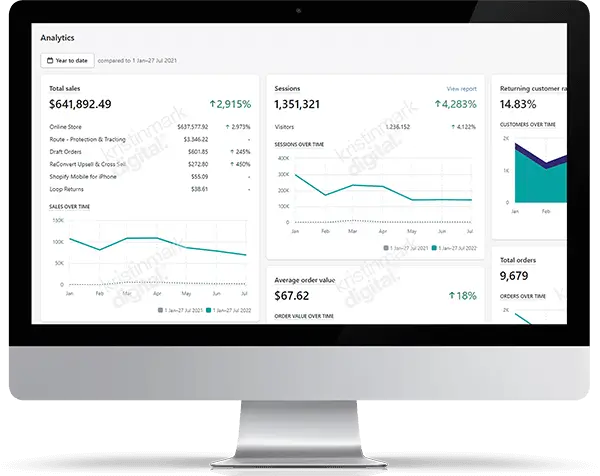
By encompassing everything previously discussed, here’s how:
Enhanced User Experience:
- Modern and user-friendly design: Upgraded themes often sport sleek and modern designs that grab attention and create a positive first impression. This can lead to a more enjoyable browsing experience, encouraging users to stay on your site and explore your products.
- Improved navigation: Upgraded themes typically feature clear and intuitive navigation menus, making it easy for customers to find what they’re looking for quickly and efficiently. This reduces frustration and increases the likelihood of them completing their desired actions, such as adding items to their cart or making a purchase.
- High-quality product pages: Upgraded themes often offer features like high-quality product images and videos, detailed product descriptions, and customer reviews. This allows customers to make informed purchasing decisions and builds trust in your brand, leading to higher conversion rates.
- Mobile-first design: With the majority of online shopping now happening on mobile devices, a responsive design is crucial. Upgraded themes ensure your store seamlessly adapts to different screen sizes, providing a smooth browsing experience for mobile shoppers and reducing cart abandonment due to technical issues.
Streamlined Checkout Process:
- Simplified and improved checkout: Upgraded 2.0 themes may offer features like guest checkout options, multiple payment methods, and progress indicators, making the checkout process faster and more user-friendly. This reduces the number of steps customers need to take to complete their purchase, leading to fewer abandoned carts and higher conversion rates.
- Clear calls to action: Upgraded themes often prioritize prominent and clear calls to action (CTAs) throughout your store. These CTAs encourage customers to take specific actions like adding items to their cart, proceeding to checkout, or subscribing to your newsletter. Well-placed and action-oriented CTAs can significantly increase the likelihood of visitors converting into paying customers.
Increased Trust and Confidence:
- Professional appearance: A modern and well-designed theme projects a professional image of your brand, which can build trust and confidence with potential customers. Customers are more likely to purchase from a store that appears reliable and trustworthy.
- Social proof: Upgraded themes may allow for easier integration of social proof elements like customer reviews and testimonials. These elements can significantly influence purchasing decisions by showing potential customers how your products have helped others, ultimately encouraging them to convert.
Improved Search Engine Optimization (SEO):
- As discussed previously, upgraded themes often emphasize faster loading times and mobile-friendliness, which are both ranking factors in search engine algorithms. Improved SEO ranking can lead to more organic traffic to your store, exposing your products to a wider audience and potentially increasing conversion rates.
Factors to Consider:
- Theme quality matters: Again, while upgraded themes generally offer features to improve conversion rates, choosing a well-designed and user-friendly theme from a reputable developer is crucial.
- Content and pricing strategy: A well-designed theme is just one piece of the puzzle. High-quality product descriptions, competitive pricing, and targeted marketing efforts are also essential for boosting conversions.
- Data analysis and optimization: Utilize analytics tools to track user behavior and identify potential conversion roadblocks within your store. This data can guide further optimization efforts and theme adjustments to continuously improve conversion rates.
By implementing a combination of theme upgrades, design best practices, and user-centric marketing strategies, you can create an online store that not only looks good but also effectively converts visitors into paying customers.
10 – Access to Premium Features
Upgrading your theme to something like RankHigherTheme® will more often than not, unlock access to exclusive features and functionalities not available in other themes (either paid or free) offering a competitive edge.

These features can significantly enhance the functionality and capabilities of your online store, potentially leading to improved customer experience, increased sales, and overall business growth.
However, it’s important to understand that not all upgraded themes offer premium features:
- Theme tiers and pricing: Some theme developers offer various theme tiers with different pricing structures. Higher tiers typically grant access to a wider range of premium features compared to basic or free themes.
- Specific features offered: The specific premium features offered can vary significantly depending on the theme developer and the theme itself.
Here are some examples of premium features you might find with certain upgraded Shopify themes:
Enhanced Design and Customization:
- Advanced layout options: Drag-and-drop page builders or pre-built sections might be available, allowing for greater control over the layout and design of your store pages.
- Theme customization tools: Advanced tools for editing colors, fonts, and other design elements beyond basic options offered in free themes.
- Theme sections for specific functionalities: Pre-built sections dedicated to showcasing product collections, displaying testimonials, integrating social media feeds, or creating unique landing pages.
Advanced Product Features:
- Product filtering and sorting based on various criteria: Allow customers to filter and sort products by size, color, price range, brand, or other relevant attributes, leading to a more efficient product discovery experience.
- Product badges and labels: Highlight promotions, discounts, or new arrivals with eye-catching badges and labels, potentially driving customer interest and increasing sales.
- Quick view product options: Enable customers to view product details and add items to the cart without leaving the current page, potentially improving conversion rates.
Improved Marketing and Sales Tools:
- Pop-ups and banners: Create targeted pop-ups and banners to announce promotions, capture email addresses, or promote specific products.
- Email marketing integrations: Seamless integration with popular email marketing platforms for easier subscriber list management and targeted email campaigns.
- Advanced discount codes and coupons: Offer more control over discount code creation, including setting expiry dates, minimum purchase requirements, and product category limitations.
Analytics and Reporting:
- Advanced built-in analytics: Gain deeper insights into customer behavior, track conversion rates, and analyze website traffic with more detailed reports compared to basic Shopify analytics.
- Integration with third-party analytics tools: Connect your store with popular analytics platforms for even more comprehensive data and insights into your store’s performance.
Additional Features:
- Inventory management tools: Streamline inventory management with features like stock level tracking, low-stock alerts, and automatic purchase orders for low-stock items.
- Subscription management: Offer subscription-based services or products with features like recurring billing, automatic product deliveries, and customer account management tools.
- Multilingual capabilities: Translate your store content into different languages to reach a wider audience and expand your global reach.
Before upgrading your theme, it’s crucial to carefully review the specific features offered by different themes and ensure they align with your specific needs and budget. You should also consider the theme’s reputation, user reviews, and ongoing support provided by the developer.
By leveraging the premium features offered by some upgraded Shopify themes, you can potentially:
- Enhance the user experience: Create a visually appealing and user-friendly shopping experience that keeps customers engaged.
- Boost conversions: Implement features that encourage customers to add items to their cart and complete purchases.
- Increase sales: Utilize marketing and sales tools to reach a wider audience, promote your products effectively, and drive sales growth.
- Gain valuable insights: Utilize advanced analytics to understand your customers better and optimize your store for improved performance.
In Summary
As explained, evaluate your specific needs and budget before deciding to upgrade your Shopify theme. Consider factors like the theme’s features, design aesthetics, compatibility with your existing store setup, and ongoing support options.
Carefully consider your specific needs and budget when choosing a theme, and ensure it offers the features and functionalities that align with your business goals. By conducting thorough research, understanding your target audience, and implementing ongoing optimization efforts, you can leverage the benefits of an upgraded Shopify theme to create a successful and thriving online store.
cost?
Hi Fred, thanks for reaching out. Upgrades and store redesigns using our OS 2.0 theme and filter tech start from $4997 but it depends on how many SKU’s you have as we manually optimize each SKU for the search engines, our filter tech and the Google Shopping Comparison Service (free and paid). Judging by the number of collections you have on your store, you have many SKU’s. I see you have your filters on your collection pages blocked from the search engines (Searchanaise?) – this would work wonders on your store – please watch this: https://www.youtube.com/watch?v=ZyGZABsIoBI&list=PL48Ukz7bjqucE3crDmBxtyK400EWZYzl6&index=1
More FAQ’s answered here at the bottom of the page page thanks – https://ultimateretailgrowth.com/ please reach out if you have any more questions thanks!